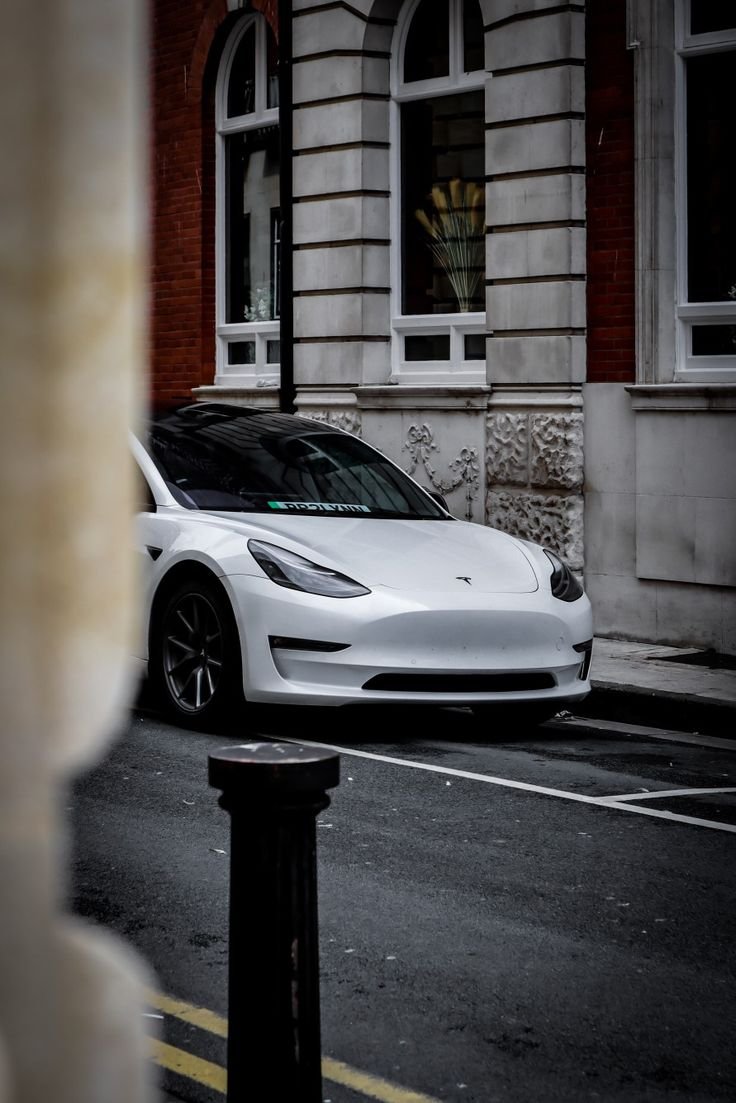Die-Casting Technology In Auto Manufacturing: Enhancing Efficiency And Quality
Die-casting technology has emerged as a pivotal method in the automotive manufacturing industry, significantly enhancing both efficiency and product quality. This process involves forcing molten metal into a mold cavity at high pressure, resulting in precision-engineered components that meet the rigorous demands of modern vehicles.
As automakers strive for increased productivity and cost-effectiveness while balancing the need for lightweight materials and robust structural integrity, die-casting offers an innovative solution. In this article, we explore the advancements in die-casting technology, its impact on automotive design and production, and how it is reshaping the industry's landscape by facilitating faster turnaround times, reducing waste, and improving the overall performance of vehicles.
No. 1
Overview of Die-Casting in the Automotive Industry
Die-casting plays a key role in making car parts. It helps create strong, light pieces that are used in many areas of vehicles. The process has changed over time to meet new needs in the auto world.
The Role of Die-Casting in Automotive Manufacturing
Die-casting is essential for making car parts. You can use it to create engine pieces, brackets, and even parts for electric cars. It's great because it can create complex shapes that are not only tough and durable but also visually appealing.
When you use die-casting, you can make lots of parts really fast. This is perfect for car makers who need to build many vehicles quickly. The parts come out very accurate, which means they fit together well.
Some common car parts made by die-casting are:
Engine parts like cylinder heads
Brackets for motors
Gear cases
Body parts
Die-casting is also good for making parts that help manage heat in cars. This is extra helpful for electric vehicles.
Advancements in Die-Casting for Automotive Technology
Die-casting keeps getting better to meet new car needs. One big change is high-pressure die-casting (HPDC). This method makes parts even stronger and lighter.
Car makers now use die-casting for bigger parts, too. Some companies can make whole car frames this way. This helps make cars lighter and safer.
New die-casting tech also helps with electric cars. It can make special parts for batteries and motors. These parts help electric cars run better and go further.
Die-casting is also getting greener. New methods use less energy and materials. This approach helps car manufacturers become more eco-friendly.
No. 2
Materials and Properties in Die-Casting
Die-casting uses various metals to make car parts. Each metal has unique traits that make it good for different uses. Let's look at the main materials used in auto die-casting.
Aluminum and Aluminum Alloys
Aluminum is a top choice for car parts. It's light but strong, which helps make cars use less fuel. You'll find aluminum in engine blocks, transmission cases, and wheels.
Aluminum alloys can be even better. They mix aluminum with other metals to improve its quality. These alloys resist rust and conduct heat well. This makes them great for radiators and heat sinks.
Car makers love aluminum die-casting because:
It's quick to make parts
The parts come out smooth and exact
You can make complex shapes easily
Other Metals in Die-Casting
Magnesium is another star in car die-casting. It's even lighter than aluminum. You might see it in steering wheels and seat frames. Magnesium parts help cars be lighter and use less gas.
Zinc alloys are good for small, detailed parts. They flow well when melted, so they can fill tiny spaces in molds. Zinc parts often go in door handles and trim pieces.
Some car parts need copper's strength. It's used in bearings and bushings. Copper conducts electricity well, so it's also in some electrical parts.
Each metal brings something special to car making. Choosing the right one helps make cars better, safer, and more fun to drive.
No.3
Die-Casting Machines and Techniques
Die-casting machines come in different types and use various techniques to create metal parts. These machines and methods have evolved to meet the changing needs of car makers at investment casting foundry.
Cold Chamber vs. Hot Chamber Processes
Cold chamber die-casting works well for metals with high melting points. You'll find it used for aluminum and copper alloys in car parts. The machine keeps molten metal separate from the injection system.
Hot chamber die-casting suits metals that melt at lower temperatures. It's great for zinc and magnesium alloys. The melting pot is part of the machine, which speeds up the process.
Both methods have their place in making car parts. A cold chamber is better for larger, more complex pieces. Hot chamber shines in the high-volume production of smaller parts.
Innovations in Die-Casting Machinery
New die-casting machines are getting bigger and smarter. Some can now make whole car body parts in one go. This cuts down on the need for welding lots of small pieces together.
Automation is a big deal in modern die-casting. Robots can load dies, remove parts, and even trim excess metal. This makes production faster and more precise.
Computer controls help manage the whole process. They track things like temperature and pressure to make sure each part comes out just right.
These advances mean car makers can create lighter, stronger parts. It's all part of making cars more fuel-efficient and eco-friendly.
Tesla Accessories
Wholesaler of Tesla accessories—providing quality products at great prices for an optimal driving experience
No. 4
Applications and Components in Automotive Die-Casting
Die-casting plays a big role in making car parts. It helps create strong, light pieces that make cars better. Let's look at some key parts made this way and how Tesla uses it.
Key Automotive Parts Made by Die-Casting
Engine parts are often made by die-casting. You'll find engine blocks and cylinder heads made this way. These parts need to be tough and precise.
Gearboxes also use die-cast parts. They help your car shift gears smoothly. Die-casting makes sure these parts fit just right.
Electronic covers protect delicate car parts. Die-casting creates covers that keep out water and dirt.
Other common die-cast parts include:
Stators for electric motors
Brake parts
Steering components
Die-casting helps make these parts lighter. This can make your car use less fuel.
Case Study: Tesla's Die-Casting Progressive Use
Tesla has changed how cars are made with die-casting. Their Model Y uses big die-cast parts. This makes the car body simpler and stronger.
Tesla's "Giga Press" makes huge car parts in one go. This machine can make a car's rear body in just one piece. It used to take 70 parts!
This new method has big benefits:
Faster to make
Fewer parts to put together
Stronger car body
Less chance for mistakes
Tesla plans to use this for more car models. It shows how die-casting can change car making. You might see more carmakers follow Tesla's lead soon.
No. 5
Efficiency and Environmental Impact
Die-casting helps make cars better for the planet. It creates parts that are light but strong. This helps cars use less fuel and pollute less.
Fuel Efficiency and Lightweighting
You might wonder how die-casting makes cars more eco-friendly. It's all about weight. Die-cast parts are lighter than parts made in other ways. This means the whole car weighs less.
A lighter car needs less fuel to move. This saves you money at the gas pump. It also cuts down on CO2 coming out of your car's exhaust.
Car makers use die-cast parts to meet tough fuel economy rules. These parts include engine blocks, transmission cases, and body panels.
Die-casting lets you make parts that are thin but strong. This is perfect for electric cars. They need to be light to go far on one charge.
Die-cast parts last a long time, too. This means you don't need to replace them as often. Less waste is good for the environment.
When a die-cast part does wear out, you can recycle it. This saves energy and raw materials. It's a win for you and the planet.
No. 6
Quality, Cost, and Production Aspects
Die-casting offers advantages for automakers in quality, cost, and production. It allows for precise parts with consistent quality at scale. Let's explore how this technology balances these key factors.
Maintaining High Quality in Die-Cast Parts
Die-casting produces high-quality auto parts with excellent dimensional accuracy. You can count on consistent results across large production runs. The process creates smooth surface finishes that often need minimal post-processing.
Parts made this way have good dimensional stability. This means they keep their shape well over time and use. Die-cast components also offer great performance in areas like:
Strength-to-weight ratio
Corrosion resistance
Heat dissipation
Quality control is easier with die-casting. Automated systems can check parts quickly as they're made.
Balancing Costs and Production Scale
Die-casting shines when it comes to cost-effectiveness at high volumes. The initial mold costs are high, but per-part prices drop as production increases. This makes it ideal for mass-produced auto components.
You save on manufacturing costs in several ways:
Fast production cycles
Less material waste
Reduced need for assembly and welding
Die-casting is often more environmentally friendly than other methods. It uses less energy and creates less scrap. You can also recycle most die-cast materials easily.
The process works well for both small parts and larger components. This flexibility helps you optimize your production line. With die-casting, you can make complex shapes in one step that might need multiple processes otherwise.
Takeaways
Die-casting technology has revolutionized auto manufacturing by significantly enhancing both efficiency and quality in the production process. By allowing for the creation of complex shapes with tight tolerances, this method minimizes material waste and reduces the need for extensive post-processing, leading to faster production cycles.
Additionally, the consistent and reliable nature of die-casting ensures that manufacturers can meet the increasing demand for durable and lightweight components, ultimately contributing to improved vehicle performance and sustainability. As the automotive industry continues to evolve, embracing advanced die-casting techniques will be crucial in achieving higher standards of innovation and competitiveness.
Looking for resources?
At Hello Lovely Living, we aim to empower you to earn and save money and time while benefiting from our expansive network of home, life, wellness, travel, work-from-home, career, and business resources and opportunities. Discover a wealth of tools to support your journey.




